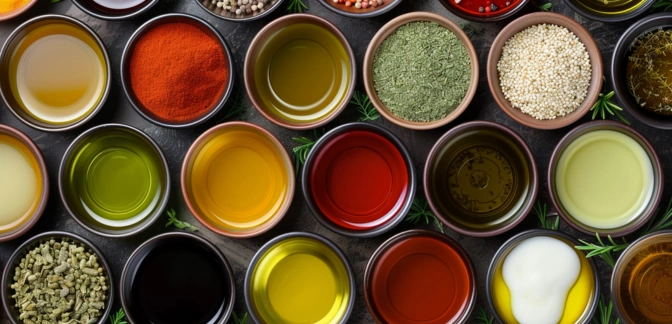Pizza Sauce — Nutrients, Health Benefits, And Shopping Tips

Written by Listonic Team
Last update on September 6, 2024
Pizza sauce nutrients
Nutrition facts
Amount per 100 g
Calories
🔥 54 kcal
| Nutrition per: 100 g | Value | % Daily Value* |
|---|---|---|
| Carbs | 12 g | 4.36% |
| Fiber | 2 g | 7.14% |
| Sugars | 7 g | 14% |
| Glycemic Index | 45 | - |
| Protein | 2 g | 4% |
| Sodium | 430 mg | 18.7% |
| Total Fat | 0 g | - |
*The % of Daily Value (DV) tells you how much a nutrient in a serving of food contributes to a daily diet. 2,000 calories a day is used for general nutrition advice.
45
🟢 Low Glycemic Index
Pizza sauce facts & tips
Health benefits
- Rich in vitamins and minerals such as Vitamin C, Vitamin A, and potassium from tomatoes, which support overall health and well-being.
- High in antioxidants like lycopene, which help protect the body from free radicals and reduce the risk of chronic diseases.
- Low in calories, making it a nutritious addition to meals without significantly increasing calorie intake.
- Supports heart health due to its high potassium and lycopene content, which help lower blood pressure and improve cholesterol levels.
- Enhances flavor in a variety of dishes, making healthy foods more enjoyable and palatable.
Health risks
- High sodium content in many commercial pizza sauces, which can contribute to hypertension and increased cardiovascular risks when consumed frequently.
- Potential for added sugars in some commercial pizza sauces, which can contribute to weight gain, tooth decay, and increased risk of diabetes.
- Potential for acidity which can exacerbate symptoms of acid reflux or heartburn in sensitive individuals due to the tomato content.
- Potential for artificial additives such as preservatives, flavorings, or thickeners in some commercial pizza sauces, which may cause adverse reactions in sensitive individuals.
- Low nutrient density as pizza sauce is typically used as a condiment, offering limited vitamins or minerals compared to whole vegetables.
How to choose pizza sauce
Pizza sauce should have a deep red color and a thick consistency, ensuring that it will spread evenly on pizza dough. The sauce should have a rich tomato aroma, indicative of quality ingredients and proper seasoning.
Avoid pizza sauce that appears watery or has an acidic, sharp taste, as this can indicate an imbalance in ingredients. Containers that are dented or have compromised seals should also be avoided, as they could affect the sauce's flavor and shelf life.

How to store pizza sauce
Pizza sauce should be stored in the refrigerator after opening, kept in an airtight container. Refrigeration keeps it fresh and flavorful for up to a week.
Air exposure can cause pizza sauce to spoil. Avoid leaving it uncovered, and always use clean utensils to prevent contamination. Ensuring the container is tightly sealed maintains its taste and quality.
✅ Extra Tip
How long does it last?
Pinto beans can last for 1-2 years when stored in an airtight container in a cool, dark place. Once cooked, pinto beans should be consumed within 3-5 days if kept in the refrigerator. Proper storage helps maintain their flavor and nutritional value.
What to do with leftovers?
Leftover pizza sauce can be used in a variety of savory and Italian-inspired dishes. Use it as a topping for pizzas, flatbreads, or calzones with your favorite ingredients, or mix it into a pasta dish with cheese and herbs. Pizza sauce is also great when used as a dipping sauce for mozzarella sticks, garlic bread, or breadsticks.
Use pizza sauce in a meatball sub by layering the sauce with meatballs and cheese in a hoagie roll, then toasting until melty. If you have a lot of pizza sauce, consider making a batch of chicken Parmesan by breading and frying chicken cutlets, then baking them with pizza sauce and cheese until bubbly. Pizza sauce can also be used as a base for a casserole or baked dish with pasta, vegetables, and cheese, or mixed into a soup or stew for added richness. For a quick snack, enjoy pizza sauce with breadsticks, or mix it into a bowl of cooked pasta with a sprinkle of Parmesan and fresh herbs.
👨⚕️️ Medical disclaimer
Discover products from other categories
Listonic Team
Fact-checked
Our editorial team checked this article to make sure it was accurate at the time of publishing it.
Get the top-rated shopping list app on your phone!







